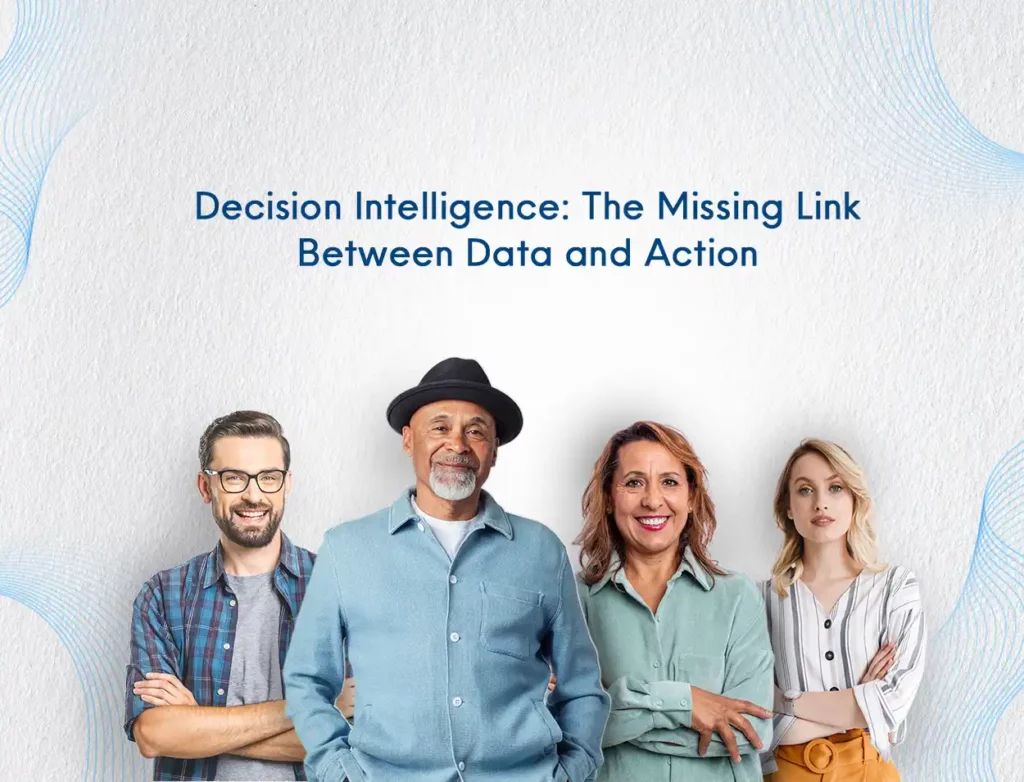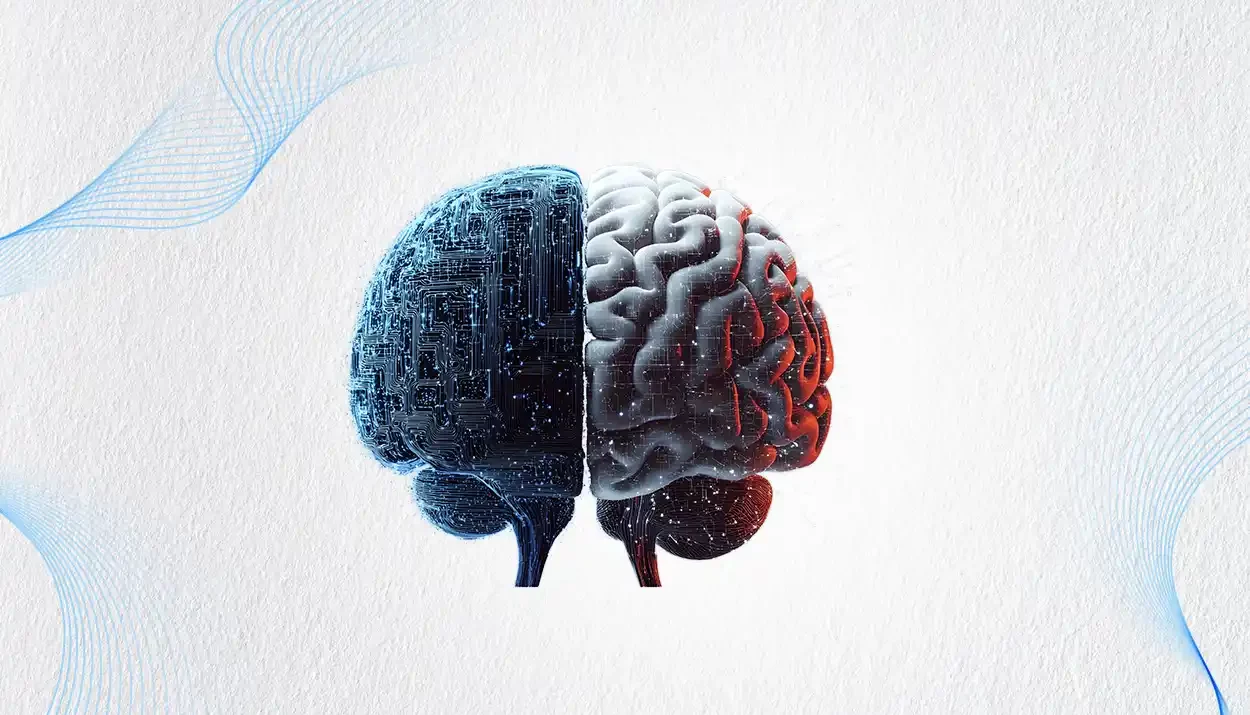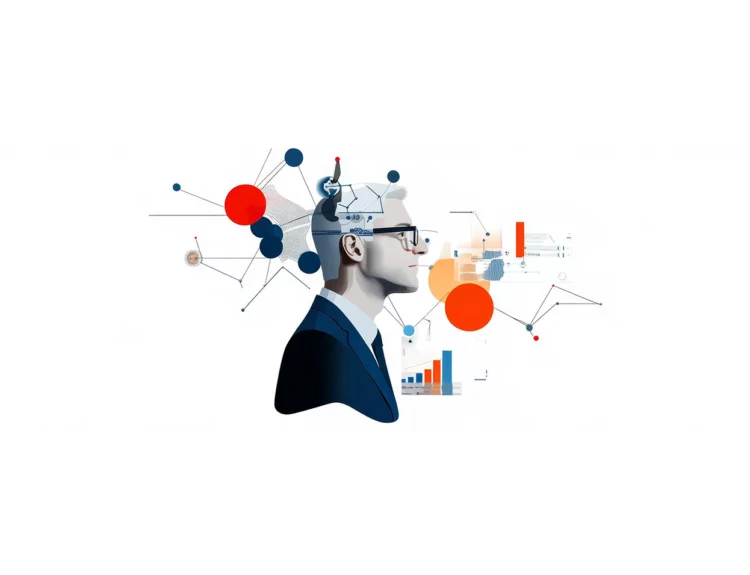Today the market is fiercely competitive. Chief Marketing Officers, Heads of Insights and Analytics, as well as Product Leaders are grappling with unprecedented pressures. Expectations for speed, personalization, accuracy and in the moment insights in consumer understanding have soared. A rapidly changing consumer landscape demands real-time yet deeply informed decisions.
Yet, according to Gartner’s 2024 CMO Spend Survey, over 60% of marketing leaders report significant challenges in deriving actionable insights from their vast data pools. This reveals a stark gap not in the quantity of data available, but in its translation into strategic and effective decisions. This is precisely where Decision Intelligence, powered by the powerful synergy of human insights and artificial intelligence appears as a transformative force.
Decision Intelligence: The Missing Link Between Data and Action

Decision Intelligence is not just another buzzword; it is a strategic framework that brings together data science, human judgment, and managerial decision-making. While AI rapidly analyzes massive datasets, humans interpret insights through a lens shaped by experience, intuition, and ethical consideration, qualities AI alone cannot provide. According to McKinsey, organizations effectively integrating AI with human insights achieve 40% better outcomes in strategic decision-making compared to those relying solely on conventional analytics. Such integration stands for more than incremental improvement. It is a fundamental reshaping of how businesses connect with consumers.
Why the Human Element Remains Essential
Amid enthusiasm around synthetic data, AI-driven automation and predictive analytics, the role of human judgment remains indispensable. AI is unmatched in its capacity for rapid pattern recognition and predictive analysis, yet only human interpretation can decipher nuances and cultural contexts, ensuring insights are emotionally resonant and culturally sensitive.
For instance, an AI model may quickly identify declining consumer engagement, but only human interpretation can pinpoint the root cause whether it is cultural sentiment shifts, subtle brand perception changes, or underlying ethical concerns. Thus, human intelligence becomes an essential guide, translating data into genuinely actionable strategies.
According to Accenture’s Technology Vision 2024 report, 74% of senior executives believe that combining human intelligence with AI significantly improves customer understanding, enhancing loyalty and driving revenue growth.
Relevance to CMOs and Brand Leaders
Chief Marketing Officers and Brand Owners are consistently seeking deeper, faster, and more precise insights to craft compelling narratives and build lasting consumer relationships. Traditional market research methodologies, while foundational, often lack the speed and adaptive capacity required today.
Decision Intelligence empowers marketers to quickly anticipate and respond to evolving consumer preferences. An AI-driven analysis can highlight emerging consumer segments in real time, while human insights ensure messaging and positioning align closely with cultural nuances and consumer sentiment. Brands adopting this dual approach not only enjoy higher engagement but can also significantly enhance customer lifetime value (LTV).
A recent Salesforce State of Marketing report indicates that brands combining AI insights with human expertise have witnessed customer retention improvements upwards of 35% compared to their peers.
Why Insights Leaders Should Embrace Decision Intelligence
Heads of Insights, Data, and Analytics hold the strategic responsibility of making insights accessible, timely, and impactful. But according to Deloitte’s 2024 Global Insights Survey, 65% of insights leaders find that insights are underutilized or misapplied due to misalignment with strategic objectives or poor stakeholder communication.
Decision Intelligence bridges this divide. AI processes vast datasets swiftly, enabling insights leaders to allocate more time to contextual analysis, strategy refinement, and stakeholder engagement. This results in insights that are not only accurate and timely but also strategically aligned and actionable.
For example, a global consumer goods company successfully leveraged AI for predictive consumer trends while human insight teams contextualized these predictions into strategic product decisions. The approach delivered over 20% improvement in new product adoption rates.
Why Product Leaders Should Care
Chief Product Officers and product development teams must continually balance innovation, consumer desires, and business objectives. Decision Intelligence helps navigate product-market fit rapidly and accurately.
When developing new offerings, AI-driven analytics can instantly spotlight gaps in market offerings or predict feature preferences. Human expertise, meanwhile, evaluates these predictions in practical, emotional, and experiential terms, ensuring the final product resonates deeply with end-users.
Research by Boston Consulting Group shows organizations incorporating combined human and AI insights into product innovation cycles have reduced their average product development timeline by as much as 30%, enhancing market responsiveness significantly.
Strategic Steps for Adopting Decision Intelligence
Embracing the Human + AI paradigm is achievable and practical, provided the following strategies are considered:
a. Integrate Human and AI Capabilities: Build hybrid insights teams that blend data scientists and domain-specific researchers. Foster close collaboration so AI’s analytical rigor complements human judgment and strategic thinking.
b. Prioritize Cultural and Emotional Context: Use human-driven qualitative methodologies alongside AI-powered analytics to fully capture and address emotional drivers and cultural nuances.
c. Focus on Data Ethics and Transparency: Maintain transparency and strong ethical governance around AI-driven insights. Humans should always provide oversight, ensuring fairness, accuracy, and accountability.
d. Encourage a Learning-Oriented Culture: Continuously train teams in data literacy, cultural intelligence, and ethical reasoning to enable seamless human-AI collaboration.
At Borderless Access, we believe the future of effective decision-making with market research and consumer insights is neither purely human nor entirely AI-driven. Rather, it lies in the strategic intersection of both. Organizations recognizing and mastering this intersection are best positioned to lead and deliver smarter, richer insights that drive customer engagement, brand loyalty, and profitable growth.
We stand at a defining moment. How we embrace decision intelligence will shape not only how brands understand consumers, but how consumers engage with brands in the years to come.







